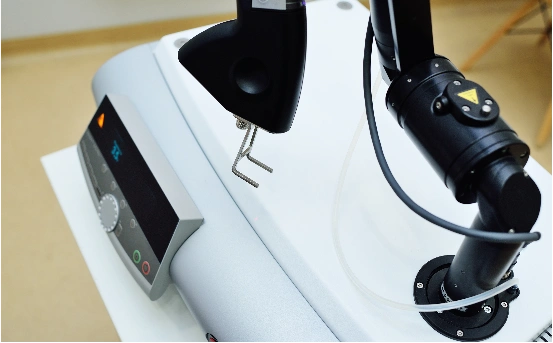Patellar Realignment Surgery is an important orthopedic procedure that corrects knee instability due to a misaligned patella. This condition is also known as Patellar Maltracking and Patellar Dislocation. It can cause chronic pain, recurrent fractures, and limited mobility. Before recommending surgery, it is important to make an accurate diagnosis for patellar realignment surgery. This will ensure that the treatment is effective and appropriate for the patient.
This blog will explore the diagnosis process of patellar realignment, including why it is important to diagnose, what symptoms and signs doctors look for, types of tests, and how these diagnostics are used to guide surgical decisions, particularly diagnosis for patellar realignment surgery.
Why is Diagnosis for Patellar Realignment Surgery so Important
Understanding of diagnosis for patellar realignment surgery is crucial for effective treatment.
A detailed Clinical Diagnosis must be performed before any surgical procedure can be considered.
- Find the cause for the misalignment of your kneecaps.
- Assess the severity of instabilities.
- Determine whether nonsurgical treatments, such as physiotherapy and bracing, may be effective.
- Identify anatomical anomalies that might require surgical correction
- Improve patient outcomes by avoiding unnecessary surgeries.
A wrong or incomplete diagnosis may lead to persistent pain, even after surgery. Orthopedic specialists use a step-by-step, comprehensive diagnostic approach.
Diagnosis of Patellar Realignment Symptoms
The following symptoms are often the reason for a patient’s referral to a doctor.
- Subluxations or repeated kneecap dislocations
- The feeling of the knee giving up
- Knee pain in the front, particularly when climbing stairs or squatting
- Swelling of the kneecap
- The patella may appear to be angled or tilted in a noticeable way.
- Audible popping or grinding sounds (crepitus)
- Limitation of range of motion
If these symptoms persist or worsen, orthopedic doctors will begin the diagnostic process in order to determine if patellar alignment surgery is needed.
Clinical Evaluation and Physical Examen
A thorough examination is the first thing to do when diagnosing a patellar realignment candidate.
What doctors look for
- Tracking the patella: The movement of the kneecap when the knee is bent and straightened.
- Laxity, or looseness of ligaments
- The quadriceps muscle (VMO) is particularly weak in muscle imbalance.
- Patellofemoral Joint
- Results of orthopaedic tests, such as the Apprehension test, Q-angle measurement and J-sign, are positive.
Clinical evaluation can provide initial clues to patellar instability, and help determine if further imaging is needed.
Image tests for accurate diagnosis
Doctors order a combination of imaging tests to confirm the diagnosis and plan surgical procedures. These include:
1. X-rays
- Lateral view shows patellar alignment and height.
- Sunrise view: Assesses patellar tilt, and position within the trochlear grove.
- Weight bearing X-rays : Show changes when moving and under load.
2. MRI
MRI can provide a detailed image of soft tissue like:
- Cartilage damage
- MPFL (medial patellofemoral ligament) injuries
- Recent dislocations can cause bone bruises
- Synovitis or inflammation
MRI can be very helpful for assessing ligamentous stability in the area of the patella. This is important in determining whether surgery is needed.
3. CT Scan
The CT scan measures:
- The TT – TG distance, (tibial tubercle to trochlear grove): An important factor in determining severity of misalignment.
- Checking for trochlear atrophies by examining the angle of the groove trochlear.
- A torsional abnormality in either the femur (or tibia).
These values can help surgeons determine if a tibial tubercle osteotomy, or trochleoplasty, is required.
Other Diagnosis Methods
Some cases, experts may also:
- Gait Analysis:- Observe how the patient walks to determine if there are any mechanical problems that may be contributing to the misalignment.
- Arthroscopy (Diagnostic): –It is a minimally-invasive procedure in which a camera is placed into the joint for direct observation of cartilage, ligaments and bone alignment. Sometimes it is done before surgery, or when planning complex cases.
Factors that influence surgical planning
The data collected by orthopedic surgeons helps them customize the surgical plan. The following factors can affect the type of surgery and its extent:
- Determination of the patellar tilt or subluxation
- Severity of Trochlear Dysplasia
- High TT to TG distance
- Previous injury to the MFL
- The anatomy of the knee
- The patient’s level of activity and age
Common procedures that can be performed on the basis of a diagnosis
- MPFL reconstruction
- Tibial tubercle transfer (TTT)
- Trochleoplasty
- Lateral Release
For optimal alignment and functionality, these procedures are sometimes combined.
The importance of early and accurate diagnosis
Early diagnosis is important to prevent further joint deterioration. Cartilage Damage can lead to Patellofemoral Arthritis when left untreated.
The following are some of the benefits of an accurate diagnosis:
- Treatment plans that are targeted
- Improved surgical outcomes
- Recovery time is shorter
- Recurrence rates are reduced
Delaying the diagnosis can result in complications, longer rehab, and future invasive surgery.
Conclusion
Diagnosis for patellar realignment surgery requires a precise diagnosis to ensure long-term success. Diagnostic tests include X-rays and MRI scans. Sometimes, advanced techniques like arthroscopy are used. All of these tools allow orthopedic specialists to make informed decisions about the best surgical approach.
Don’t ignore signs of kneecap instability or pain. A timely diagnosis and early consultation with an orthopedist can help protect your knees.























